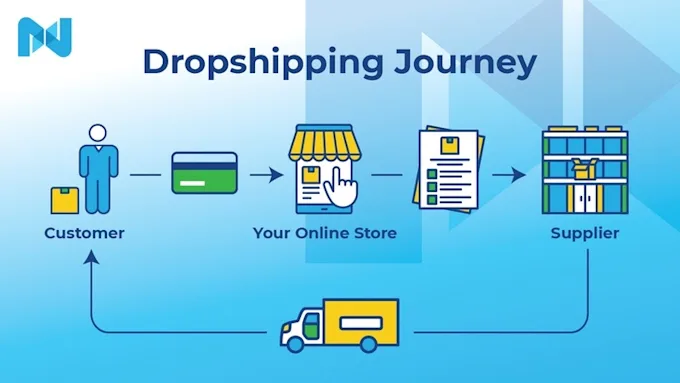
Dropshipping Business.
Through a wide variety of mobile applications, we’ve developed a unique visual system and strategy that can be applied across the spectrum of available applications.
Strategy
A strategy is a general plan to achieve one or more long-term.
- The Design Approach
- Project Challenge
- The Solution
Design
UI/UX Design, Art Direction, A design is a plan or specification for art.
- Project Challenge
- The Design Approach
- The Solution
Clients
Reach Actual Client finding Strategy
Dropshipping is a retail fulfillment strategy that allows entrepreneurs to sell products without holding inventory. In a dropshipping model, when a customer makes a purchase, the store owner forwards the order to a third-party supplier or manufacturer who then ships the product directly to the customer. This means that the retailer never handles the product physically, nor does it need to manage a warehouse or stock inventory.
One of the most significant benefits of dropshipping is the low barrier to entry. Traditional retail models often require substantial upfront investment in inventory, warehousing, and logistics. Dropshipping eliminates these costs, allowing entrepreneurs to start an online business with minimal financial risk. This model also provides considerable flexibility, as it enables retailers to offer a broad range of products without being constrained by storage space.
However, dropshipping is not without its challenges. One major issue is the thin profit margins. Since many dropshipping businesses sell similar products, price competition can drive margins down, making it challenging to achieve significant profits. Additionally, because the retailer relies on third-party suppliers, they have less control over inventory levels and shipping times. This can lead to potential issues with stockouts, delays, and discrepancies in order fulfillment, which can negatively impact customer satisfaction.



Another challenge is the need for effective supplier management. Retailers must carefully select reliable suppliers to ensure product quality and timely delivery. Establishing strong communication channels and setting clear expectations with suppliers can help mitigate issues related to order fulfillment and product quality.
Marketing and customer service are also critical components of a successful dropshipping business. Since the retailer does not handle the product directly, building a strong brand presence and providing exceptional customer service are essential to differentiate the business from competitors and build customer loyalty. Investing in effective digital marketing strategies, such as SEO, social media, and email marketing, can drive traffic to the store and increase sales.
In summary, dropshipping offers a low-risk entry into e-commerce with the potential for significant rewards. However, success in dropshipping requires careful planning, strategic marketing, and effective supplier management. By navigating these challenges and focusing on customer satisfaction, entrepreneurs can build a profitable dropshipping business.
